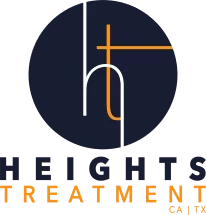Table of Contents
What is high-functioning depression? Many confuse or misuse this term for persistent depressive disorder (PDD). Today, we’ll look at what high-functioning depression is, how it’s related to persistent depressive disorder, symptoms, causes, and treatment.
Different Types of Depression, Different Symptoms
It is possible for two people to have diagnosable depression but present with very different symptoms. With over 16 million Americans reporting at least one major depressive disorder yearly, you can see why symptoms vary greatly.
The most common symptoms of depression include hopelessness, fatigue, aches and pains, and loss of interest in activities you once enjoyed. You may even feel like your speech and movements are in slow motion.
Different types of depression include major depressive disorder, bipolar disorder, seasonal affective disorder, postpartum depression, and persistent depressive disorder.
What is Persistent Depressive Disorder (PDD)?
High-functioning depression, dysthymia, chronic depression, and double depression are associated with persistent depressive disorder. The Diagnostic and Statistical Manual for Mental Disorders (DSM) does not recognize high-functioning disorder as a technical diagnosis. However, the diagnosis with clinical symptoms that most resemble high-functioning disorder is PDD or Dysthymia.
According to research, 1.5% of American adults have PDD, representing a group of people who have depression but continue to go through all the motions and fulfill responsibilities in their personal, professional, and social lives. On the outside, they may seem fine to people who do not know them well.
Someone with PDD is not fine, however. They are operating on auto-pilot. Eventually, their symptoms will start to interfere with their overall functioning.
Symptoms of Persistent Depressive Disorder
Other than the most common symptoms listed above, someone with PDD may present with the following:
- Irritability
- Changes in appetite
- Inability to sleep or oversleeping
- Low self-esteem
- Concentration problems
- Inability to make decisions
- Crying or tearful much of the time
- Lack of motivation
- Making statements about regrets, suicide, sadness, emptiness, etc.
- Pessimistic attitude
Having at least two of these symptoms for two years, even if the symptoms are mild, is PDD. Symptoms of PDD come and go, with some people feeling fine for a couple of months and then depressed for a few months. It is an ebb and flow of emotions.
Some of the symptoms will be similar in children and adolescents, and some will vary. Watch for the following:
- Complaints they feel aches or pains in specific parts of the body
- Restlessness
- Easily agitated or quick to get defensive or angry
- Anxiety when anticipating a change in their schedule or separation from friends or family
- Loss of interest in activities they once enjoyed
- Drop in grades
- Concentration problems or difficulty remembering important information
- Statements about wanting to go away from everyone, to disappear, suicide, running away, etc.
Other signs of depression in children and adolescents may include crying spells for no apparent reason other than feeling sad. They may become fixated on their faults or perceived failures, have a constant negative attitude, and often be tardy or absent from school.
Causes of Persistent Depressive Disorder
Every person with PDD has a different set of risk factors, which are the things that make them more likely to develop high-functioning depression. Risk factors may include:
- Genetics
- Epigenetics
- Mental illness
- Stress
- Trauma
- Brain chemistry
- Living environment
- Lifestyle factors
- Chronic illnesses
- Medications
- Relationship problems
- Drug and alcohol misuse
Too often, people get into a routine, and each day consists of the same activities. It can become robotic, and they do not think they have depression because they are still functioning.
Treatment for Persistent Depressive Disorder
People who recognize and accept their depressive symptoms are more likely to seek a diagnosis and learn about treatment options. A combination of therapies is often the best way to help someone with high-functioning depression.
Treatment starts with finding a licensed mental health professional who can evaluate your symptoms and gather data using diagnostic tools. Once the evaluation is complete, they will establish a diagnosis and create a treatment plan.
Your treatment plan may include behavioral therapies, medication, holistic or alternative, family therapy, support groups, education, etc. Professionals realize there is no one-size-fits-all treatment plan, and based on your unique needs, you will get recommendations. Below are the common elements of a treatment plan.
Anti-depressant Medication
Symptoms of depression are partly due to brain chemistry, specifically with the neurotransmitters that release Serotonin responsible for mood, including happiness or sadness. When Serotonin levels are low, depressive symptoms appear.
To rebalance Serotonin, anti-depressant medication such as selective serotonin reuptake inhibitors can help.
Psychotherapy
Psychotherapy is also known as counseling, therapy, or behavioral therapy. They are supplements to medication therapies. Behavioral treatments for depression include cognitive-behavioral therapy (CBT), a type of talk therapy to help someone with depression recognize thoughts that support depressive symptoms. Because thoughts influence behaviors, replacing negative thoughts with positive ones can lead to healthier reactions.
Dialectical-behavioral therapy (DBT) is a form of CBT that adds an element of mindfulness practices to overcome negative thinking and behaviors. Psychodynamic therapy is based on the theory that negative emotions result from unresolved conflicts from the past, and the result is depression. Therefore, confronting and dealing with past traumas can improve depressive symptoms.
Holistic Therapies
Holistic or alternative therapies are a great way of ensuring the mind, body, and spirit are healing. Therapists often integrate acupuncture, herbal remedies, art or music therapy, equine or animal therapies, yoga, meditation or prayer, fitness and nutrition, and massage.
Only holistic therapies studied and proven to improve depression are recommended.
Family Therapy
Family therapy is crucial to healing from high-functioning depression. They are likely one of the reasons you sought treatment in the first place. Maybe they noticed you weren’t yourself and seemed sad. Some family members are part of the problem, even if they don’t know it. Some family members are supportive and want to do whatever they can to help. In both scenarios, therapy can give everyone guidelines on supporting recovery from PDD.
Get Help for Persistent Depressive Disorder
Peer support and psychoeducation are vital components of treatment. If you, or someone you know, is experiencing high-functioning depression, reach out to a therapist. You can see positive results in a short period and start enjoying life with a much happier perspective.
Sources:
- CDC. Depression and Anxiety. Centers for Disease Control and Prevention. Published September 14, 2022. Accessed October 5, 2022. https://www.cdc.gov/tobacco/campaign/tips/diseases/Depression is more than just feeling down or having a bad day. When a sad mood lasts for a long time and interferes with normal, everyday functioning, you may be depressed.
- Schimelpfening N. 7 Types of Depression You May Not Know About. Verywell Mind. Published January 13, 2021. Accessed October 5, 2022. https://www.verywellmind.com/common-types-of-depression-1067313
- Drake W. What Is Psychoeducation And Why Does It Matter? | BetterHelp. Published July 28, 2022. Accessed October 5, 2022. https://www.betterhelp.com
The Heights Treatment Editorial Guidelines
There is a vast amount of misinformation online especially as it relates to health & wellness. We have made it our mission at The Heights Treatment to provide accurate, medically sound content that has been medically reviewed by a doctorate level clinician so that you can trust the information contained within our website.





